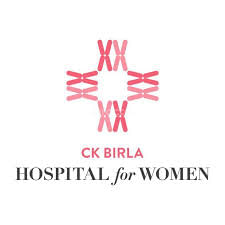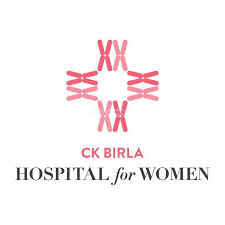Ck Birla Hospital For Women
Multi-speciality Clinic (Pediatrics, Cardiology & more)
About Clinic
THE CK BIRLA GROUP The CK Birla Hospital for Women is part of the $1.8 billion diversified CK Birla Group. The Group has interests across technology and automotive, home and building, and ...read more
Clinic Location
Videos
Amenities
Parking
Cafeteria
Waiting Lounge
Credit Card
Reception
Wheel chair assistance
Online Appointments
Ac Rooms
Pharmacy
Diagnostic Lab Service
Ambulance
24*7 Timings
Doctors in Ck Birla Hospital For Women
Network Hospital
Specialities
Doctors in Ck Birla Hospital For Women
Dr. Mandeep Singh Malhotra
Dr. Debashish Chanda
Dr. Reetadyuti Mukhopadhyay
Dr. Sanjat Chiwane
Dr. Deepika Aggarwal
Dr. Shilpi Bhadani
Dr. Tushar Tayal
Ck Birla Hospital For Women Reviews
Sankil
Apr 06, 2017Dr Shipli Bhandani is not just friendly, but also is very motivating. In order to diagnose my problem completely she asked me a number of questions. His suggestion for hair transplant extremely benefitted me. I am really grateful as her hair transplant has give me a ray of hope. I consulted a numbe...read more
Preet
Aug 02, 2017Thanks to the expert care and guidance, I feel much better than before. The best thing about Shilpi Bhadani is that she prescribes limited no. of medicines. The overall atmosphere in the Paras Hospital is very soothing. Shilpi Bhadani has a very positive attitude towards all the patients. The acne/p...read more
Piyali
Apr 22, 2017I was diagnosed with female hair loss. Dr Shipli Bhadani is one of the best physicians in city. I was in too much pain because of female hair loss, but even after consulting a number of doctors, I was not getting any relief. A friend of mine referred to Dr Shilpi Bhadani. The overall atmosphere in t...read more
Kani
May 19, 2017I am so much benefitted with the hairloss treatment given by Dr Shipli Bhandari , that i am perfectly fine now. Whatever tests Dr Shilpi Bhadani prescribed, were very correct and gave us an exact idea about my condition. The overall atmosphere in the Paras Hospital is very soothing. She is not just ...read more
Kareena
Apr 04, 2017A friend of mine referred to dr Shilpi Bhadani. She is a very sweet and sophisticated doctor and also very helpful. in order to diagnose my problem completely she asked me a number of questions. I was suffering from acne and pimples. All the staff members were very helpful at Paras Hospital in Delhi...read more
Question and Answers
Shital Thangjam
male • Mar 25, 2018 • Imphal
Pro and cons of consuming amlovas m2. 5/25 and arbitel 20 mg for high blood pressure. Can it be replace with a single tablet.
Sanjat Chiwane
7 years ago
1) You are effectively taking three tablets, Amlodipine Metoprolol and Telmisartan 2) Doses of all the medicines are small, so your question is justified 3) For a 10-15 ...read full answer



